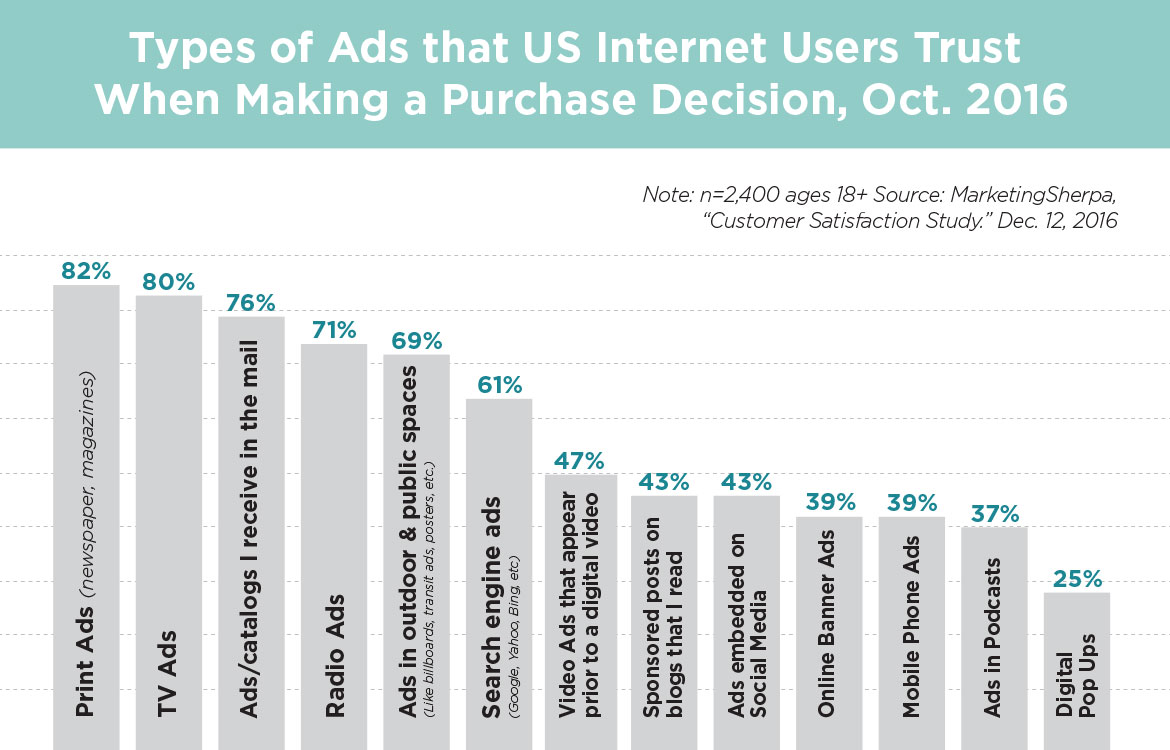Marketing: Building Trust in 2018


Market Fragmentation: “The emergence of new segments (in a previously homogeneous market) which have their own distinct needs, requirements, and preferences. These fragments reduce the effectiveness of mass marketing techniques and erode brand loyalty.” (BusinessDictionary.com)
With the internet and social media, consumers no longer have to “take our word for it.” They can research and learn with devices in the palm of their hand. And with all this information, they can more easily develop their own individual and unique product preferences. The market is becoming fragmented.
As the digital age proceeds full-speed ahead, modern marketers turn to internet marketing more and more. Digital conferences, webinars, seminars, and tutorials are a dime a dozen. And rightly so — while the advent of connectivity and digital communication has created the challenge of market fragmentation, digital marketing also offers us the best and most advanced solution to this new problem.
Digital advertising is the platform that most effectively enables marketers to serve hyper-customized messages to fragments (not just segments) almost immediately when the consumer has a need (or even slightly before — see my previous article on predictive advertising and the death of search).
So it’s no wonder that many organizations are making massive marketing budget shifts to digital. But there’s just one problem, and in an age of eroding brand loyalty, it’s a big one: digital advertising is the least trusted form of advertising among consumers making a purchase decision, according to an extensive research study by Marketing Sherpa in late 2016.
Among digital ads, website pop-ups are the least trusted, which makes sense to me — when I see those, I think it’s a virus and close the window as fast as I can. Social media ads on Facebook or Twitter are slightly more trusted, but not by much, and they tie with sponsored posts on blogs.
Video ads and search engine ads fall in the middle of the pack as far as purchase-decision trust, although we know (thanks to SearchEngineWatch.com) that 90% of people do not click on paid search ads and choose organic results instead.
These findings are significant. As consumers have developed hundreds of unique needs and preferences, we’ve developed remarkable technology to serve them ads with the right message at the right time and in the right place. However, these fragmented consumers are also not brand loyal — so these well-messaged and well-timed ads are doing little to build trust or loyalty. In fact, they may be further eroding loyalty, reducing trust, and negatively impacting conversions and purchases.
So what do you do? Interestingly, Marketing Sherpa found that print platforms — magazines and newspapers — are the most trusted advertising platform. 82 percent of respondents said they trust print advertisements when making a purchase decision, but only 39 percent trust a mobile or banner ad online.
TV ads are almost as trusted as print ads, pulling 80 percent of respondents. Catalogs and direct mail are well-trusted also, which surprises me, since direct mail is known as a low-response and low-engagement channel. Radio makes the cut of trusted advertising platforms as well, rounding out the top four with 71 percent of respondents reporting trust in ads heard over the airways.
Over the course of my career, I’ve seen considerably better results when digital is used in combination with another medium. The combination of targeted digital advertising plus print or TV advertising may balance the scales by efficiently delivering your message on one channel and building trust on the other.
Recommendation for Smaller Budgets:
If your budget is limited, go digital. Try out social channels, particularly Facebook News Feed or audience network, and read up on SEO. Hiring an SEO company is expensive, but SEO is not rocket science. A few hours of work a month may make a big difference in your search visibility, which is the holy grail of trusted digital marketing.
Recommendation for Larger Budgets:
Combine digital and print or TV! Print is not dead — building trust is critical in the modern age, and it’s very hard to do in our fickle world. A trust-building platform like print, TV, or radio may seem like an inefficient use of resources, but it may not be if consumers trust the ads they receive there.
Jamie Patterson is the director of marketing at JCMG.


